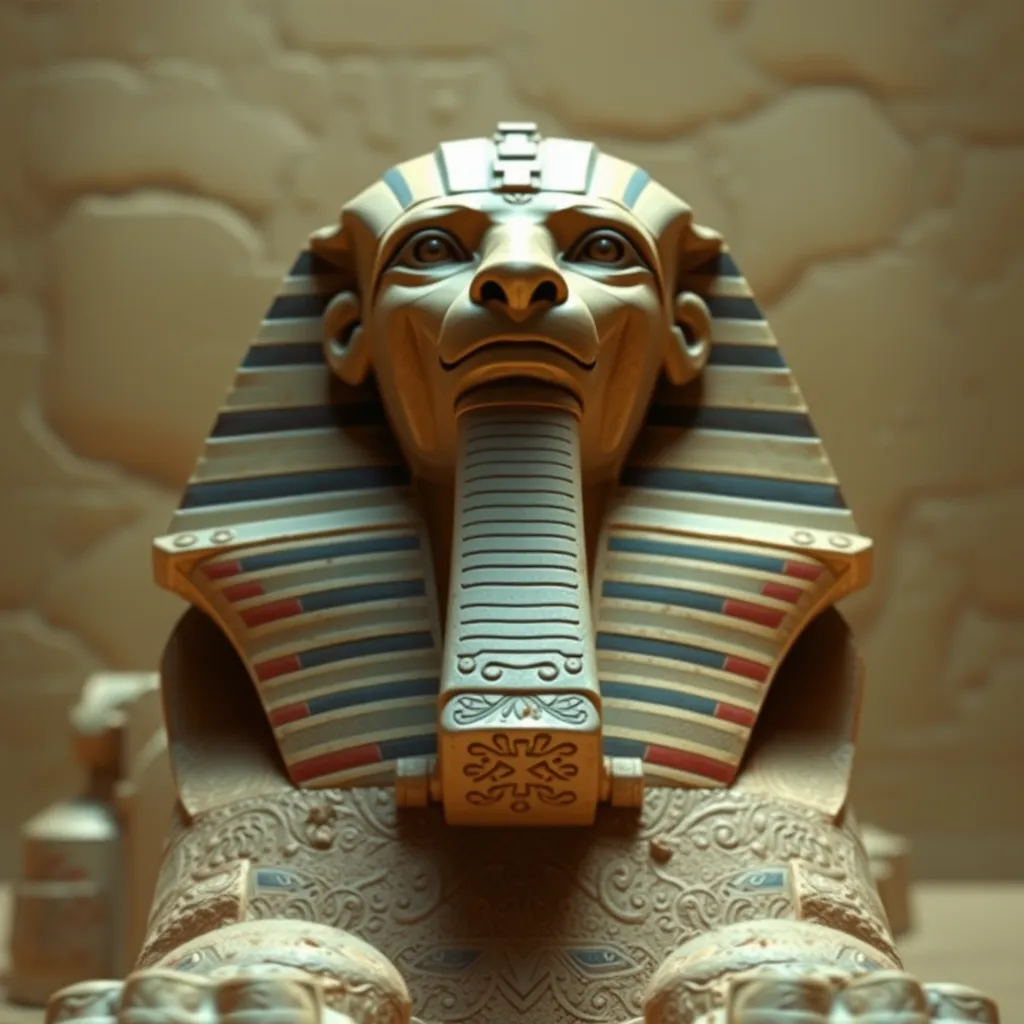The Mysteries of the Sphinx: Unraveling the Riddle of the Lion-Headed Creature
I. Introduction
The Great Sphinx of Giza, an iconic figure of ancient Egyptian civilization, stands as one of the most enigmatic monuments of antiquity. With its lion body and human head, the Sphinx has captivated the imagination of historians, archaeologists, and tourists alike. It serves not only as a guardian of the Giza plateau but also as a testament to the sophisticated artistry and religious beliefs of the ancient Egyptians.
Central to the allure of the Sphinx are the mysteries that surround its origin, purpose, and the broader implications of its symbolism. This article seeks to unravel these mysteries, exploring the historical context, iconography, theories of origin, and the Sphinx’s enduring legacy in modern culture.
II. Historical Context
The Great Sphinx is believed to have been constructed during the reign of Pharaoh Khafre, around 2500 BCE, although some scholars argue for an earlier date. This monumental statue, carved from limestone, measures about 73 meters long and 20 meters high, making it one of the largest and oldest monolithic sculptures in the world.
Situated near the Pyramids of Giza, the Sphinx is intricately linked to ancient Egyptian civilization. The pyramids served as monumental tombs for pharaohs, while the Sphinx is thought to embody the pharaoh’s protective qualities, safeguarding the burial sites and ensuring a successful transition to the afterlife.
III. The Iconography of the Sphinx
The Sphinx’s physical features are striking, characterized by its lion’s body and a human head, which is believed to represent Pharaoh Khafre himself. This combination symbolizes strength, wisdom, and authority. The face of the Sphinx, although weathered over millennia, is thought to have originally been adorned with regal features.
- Lion Symbolism: In ancient Egypt, lions were revered as symbols of power and protection. They were often associated with the sun god Ra and were seen as guardians against evil.
- Human Features: The human head signifies intelligence and the divine nature of the pharaoh, who was considered a god on earth.
IV. Theories of Origin and Purpose
Numerous theories exist regarding the construction and purpose of the Sphinx. Some of the most prominent theories include:
- Pharaoh Khafre’s Tribute: Many scholars assert that the Sphinx was built by Khafre to commemorate himself and his reign.
- Pre-Dynastic Origins: Some researchers propose that the Sphinx predates the Fourth Dynasty and may have been constructed by an unknown civilization, possibly related to the advanced societies that inhabited Egypt long before known history.
- Funerary Significance: The Sphinx may have played a crucial role in funerary practices, possibly serving as a guardian of the tombs of the pharaohs and a symbol of the transition to the afterlife.
The Sphinx’s role in rituals and ceremonies is still debated, but it is generally accepted that it held significant spiritual and cultural importance within the context of ancient Egyptian beliefs.
V. The Riddle of the Sphinx
In mythology, the Sphinx is famously associated with a riddle that it posed to travelers. The riddle goes as follows:
“What walks on four legs in the morning, two legs at noon, and three legs in the evening?”
The answer, representing the stages of human life, is “man.” As a baby, a person crawls on all fours; as an adult, they walk on two legs; and in old age, they may use a cane, thus “walking” on three legs. This riddle not only showcases the Sphinx’s role as a guardian but also serves as a philosophical reflection on human existence and the passage of time.
VI. Archaeological Findings and Discoveries
Archaeological efforts around the Sphinx have yielded fascinating insights into its history. Key discoveries include:
- Burial Sites: Excavations have uncovered burial shafts and artifacts that suggest the Sphinx was part of a larger funerary complex.
- Restoration Efforts: Modern restoration projects have aimed to preserve the Sphinx. Techniques such as 3D scanning and stone cleaning have provided valuable data about the monument’s original appearance.
- Water Erosion Theory: Some researchers propose that the Sphinx shows signs of water erosion, suggesting it may have been built during a wetter climate, leading to discussions about the timeline of ancient Egyptian civilization.
The application of modern technology continues to enhance our understanding of the Sphinx, revealing layers of history previously obscured by time.
VII. Cultural Impact and Legacy
The Sphinx has had a profound influence on various forms of art, literature, and popular culture throughout history. Its image has appeared in:
- Art: Countless artists have depicted the Sphinx in paintings, sculptures, and modern installations.
- Literature: The Sphinx figures prominently in classical literature, from Oedipus Rex to contemporary novels that explore themes of mystery and existentialism.
- Popular Culture: Movies, video games, and even theme parks have drawn inspiration from the Sphinx, cementing its status as a global icon.
In modern society, the Sphinx continues to symbolize mystery, strength, and the search for knowledge, representing humanity’s ongoing quest to understand its past.
VIII. Conclusion
The Great Sphinx of Giza stands as a monumental testament to the ingenuity and spirituality of ancient Egyptian civilization. Through the exploration of its historical context, iconography, theories of origin, and cultural impact, we gain insight into the complexities of this enigmatic figure.
As we reflect on the enduring fascination with the Sphinx, it becomes clear that its mysteries invite continued exploration and interpretation. The Sphinx is not merely a relic of the past but a symbol that transcends time, reminding us of our shared human experience and the mysteries that lie beyond our understanding.




